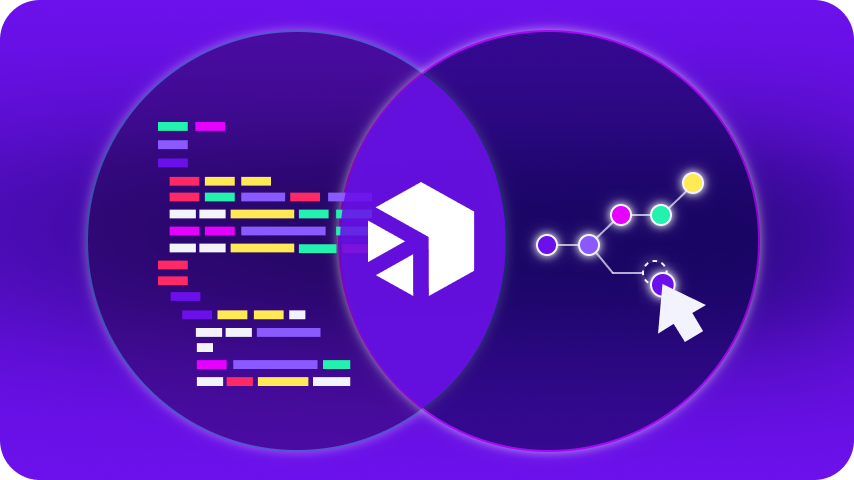December 7, 2022
What are the biggest priorities for your business? If you asked that same question of everyone in your organization – or even just those in the c-suite – would you get the same answer? Probably not. Going around the table, you might end up with multiple, often conflicting priorities from different areas of your organization. Getting everyone on the same page is hard enough with business-related issues, but when it comes to IT integration, conflicting priorities often delay business-critical integrations, or sideline projects altogether.
How Can You Get Everyone on the Same Page When it Comes to IT Integration?
To have a successful enterprise integration, business leaders must:
- Identify conflicting integration strategies
- Decide on organization’s top priorities
- Create a business plan on how to work together to achieve priority goals
Identifying Conflicting Priorities
According to the Digibee 2022 State of Enterprise Integration Report, five different types of integrations were generally ranked evenly as priorities, regardless of differing perspectives across the organization.
Many of these areas have competing but also overlapping functionality. To gain a better understanding of the conflicting priorities, let’s find out why these different types of integrations are considered priorities, and why they are important to your business.

Types of Integrations – Reflecting on 2022 SEI Report
B2B Integrations
What is B2B integration? Business-to-business (B2B) integration is when two or more companies connect and automate their business processes and related data.
36% – B2B Integrations:
Process automation, communication between multiple organizations
In the 2022 Digibee survey, 36% of respondents listed B2B integrations as a priority.
Why is B2B integration important for your business? It’s understandable why B2B partnerships are so important to business leaders today. B2B integration can help you gain a better understanding of your value chain with more overall insight into potential supply chain delays or roadblocks. Integrating B2B processes can also help streamline processes and build partnerships, which are becoming increasingly vital in today’s business landscape. A B2B integration platform can combine complex data across multiple partner applications and transform that data into standardized formats for streamlined insights throughout your business ecosystem. Automating key business processes and protocols can enable your company to work and communicate more effectively and efficiently with your key business partners, suppliers, and customers.
Data Integrations
What is data integration? Data integrations are when data from multiple sources are combined into one single view. Gartner research shows there is momentum in the data integration tools market driven by multi-cloud and hybrid data integration requirements. According to Gartner, complex data transformation and flexibility of data movement are some of the key capabilities of data integrations.
35% – Data Integrations:
Data from different sources combined into a single unified view
In the 2022 Digibee report, 35% of respondents listed data integrations as a priority.
What is data integration? Data integrations are when data from multiple sources are combined into one single view. Gartner research shows there is momentum in the data integration tools market driven by multi-cloud and hybrid data integration requirements. According to Gartner, complex data transformation and flexibility of data movement are some of the key capabilities of data integrations.
Why is data integration important for your business? The importance of data integration cannot be understated. There are several benefits to your business, such as improved data quality and integrity, automated data transfer, overall insights throughout your enterprise or business ecosystem, reduced costs and better return on investment (ROI), seamless data transfer between multiple systems, and real-time insights across the board, leading to better collaboration and decision-making capabilities.
System Integrations
What is system integration? System integration involves connecting multiple disparate IT systems and applications to create one overarching cohesive system infrastructure.
32% – System integrations:
Connect different subsystems or components into a single, larger system that functions as one
The 2022 Digibee survey showed that 32% of respondents listed system integrations as a priority.
Why is system integration important for your business? System integrations can play a key role in your business, as they connect systems that don’t usually communicate with each other. Combining these systems can streamline processes and make your business more agile, resulting in increased productivity, more accurate insights and analytics, more informed management, reduced costs, and ultimately improved customer satisfaction.
Application Integrations
What is application integration? According to Gartner, application integrations enable independently designed applications to work together. This can be a game-changer for your company in departments that use several different applications where integration would increase efficiency, and if you want to connect multiple applications across the enterprise.
31% – Application integrations:
Merge and optimize data and workflow between disparate software applications
In the 2022 Digibee survey, 31% of respondents listed application integrations as a priority.
What is application integration? According to Gartner, application integrations enable independently designed applications to work together. This can be a game-changer for your company in departments that use several different applications where integration would increase efficiency, and if you want to connect multiple applications across the enterprise.
Why is application integration important for your business? Gartner states that application integrations can help orchestrate the flow of activities performed by several disparate software applications. They can also create consistent data across independent applications, and provide access and functionality from independently designed applications into a single interface for the user.
API Management
What is API management? Application Programming Interface (API) management covers a broad range of functions. It encompasses the overall process of creating, publishing, managing, and analyzing API connections within an enterprise. Individual APIs include a set of operations available to app developers. According to Gartner, API management includes the people, processes, and technology used by an organization to safely and securely publish APIs.
28% – API management:
Distribute, control, and analyze APIs that connect applications and data
In the 2022 Digibee survey, 28% of respondents listed API management as a priority.
What is API management? Application Programming Interface (API) management covers a broad range of functions. It encompasses the overall process of creating, publishing, managing, and analyzing API connections within an enterprise. Individual APIs include a set of operations available to app developers. According to Gartner, API management includes the people, processes, and technology used by an organization to safely and securely publish APIs.
Why is API management important for your business? API management solutions distribute, control, and analyze APIs that connect applications and data. API management can enable digital transformation, manage internal and external relationships with API users, and drive business value from APIs. The value gained from an API management solution is largely dependent on the vendor selected to provide the service, so your business should do its homework before selecting the right business partner to work with.
It might appear that there is a lot of overlap in these competing priorities. An enterprise integration platform-as-a-service solution can integrate all of these competing priorities into one successful solution. In order to reach that goal, you need to define your priorities.
Clearly Define Priorities and Work Together to Achieve Them
While integration priorities were scored fairly evenly across all respondents in the Digibee survey, this lack of a clear objective can result in potential conflicts among stakeholders, which can delay implementation and increase costs.
That’s why it’s important to clearly define your priorities when it comes to your strategic implementation. According to the Digibee survey, internal alignment on an integration strategy is critical to a successful implementation.
As a business leader, you must work and collaborate with the other leaders in your organization to determine the top priorities for your overall business and work together to achieve them. The same principle applies to an IT integration strategy, whether your company’s leading priorities involve B2B integrations, data integrations, system integrations, application integrations, or API management. According to the Digibee ebook ‘How to Decide on an Integration Strategy’, Gartner states that by 2025, more than 75% of midsize, large and global organizations will establish integration strategy empowerment teams to support collaborative integration.
Steps to Success
To get started, build your enterprise integration strategy focused on a single objective as a first step, and understand the roadblocks to enterprise integration.
You can also take an overall approach with enterprise integration Platform-as-a-service. An iPaaS solution is a scalable subscription-based service that connects your current systems with new technologies and combines organizational data regardless of underlying silos or legacy infrastructure.
Successful, cost-effective integrations are achievable, and an iPaaS solution can help you reach your goals.
Learn more about Digibee’s innovative approach to integration. Download your free copy of the 2023 report or contact our experts directly for more information.
Your data, fully integrated, in less than three weeks. Let Digibee show you how.













